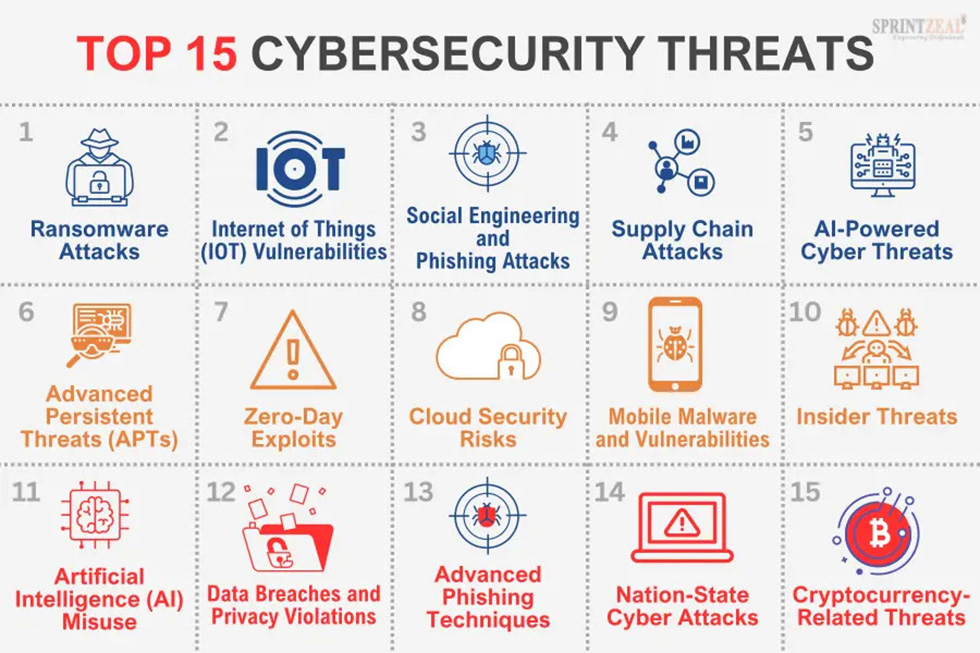Multiple Threats, Players Target Media Content
Concerns over IP protection continue to fester

With the total value of the global digital video market estimated at $193 billion in 2023 and expected to explode to more than $503 billion by 2032—according to IMARC Group—that growth rate of nearly 11% represents a market that needs to make content protection a top priority.
“The growth trajectory means it will be a dereliction of responsibility for companies in the digital content space that derogate or underfund efforts to protect their investments and IP,” said Emeka Okoli, senior vice president of business solutions with Zixi, a secure content streaming platform provider for companies such as Amazon, Bloomberg, Apple, Fubo and Roku. “All linearized content, including big-screen VOD assets, are fair game to the bad guys who also see a gold mine.”
In the past, broadcasters and content producers could live with a certain level of piracy and look the other way, according to Asaf Ashkenazi, CEO of Verimatrix; developer of streaming security solutions such as Verimatrix Streamkeeper, whose Counterspy module uses AI to anticipate attacks. “However, today’s incredibly competitive market forces everyone to be more efficient and make sure they don’t share their value with cybercriminals and pirates.”
A Wide Range of Threats
Given the multibillion-dollar value of digital video content, it’s not surprising that it’s under attack from many directions. “Key threats include piracy, content leakage, theft and illegal distribution, all of which compromise content monetization,” said Ian Hamilton, CTO of Signiant, known for its SaaS solutions that support secure content exchange within and between media organizations. “Piracy and illegal distribution result in lost revenue from unauthorized access, while content leakage and theft devalue exclusive releases.”

There is a mind-boggling variety of threat actors doing their best to steal content and then profit from that theft, according to Hamilton. “Threat actors range from organized crime groups and hackers to insiders, individual pirates, and even state actors,” he said. “Organized crime groups run piracy operations for profit, distributing stolen content through illegal channels. Hackers may target content for financial gain or to disrupt media companies. Insiders, such as employees or contractors, might leak content for personal or financial reasons. Individual pirates steal content for notoriety or minor profits, while state actors may pursue political or economic objectives.”
To make matters worse, today’s video content pirates are not the stereotypical lone hackers sitting in a darkened theater with a camcorder, or recording video streams on their home computer and then sharing those copies with friends. In many cases, “they are organized just like a profitable digital streaming business, often operating across borders with sophisticated operations centered around one goal: making money at the expense of hard-working content providers and video distributors,” said Ashkenazi.
The Pros and Cons of AI
The advent of AI isn’t helping. “AI enables threat actors to automate attacks, enhance social engineering, and create deepfakes,” said Hamilton. “It facilitates rapid identification of vulnerabilities and streamlines the theft and distribution process.”
The professional video industry's #1 source for news, trends and product and tech information. Sign up below.
The bottom line: “Anyone who can steal content probably will,” observed Ben Jones, director of solutions marketing at MediaKind. “Their motivations include profit from selling pirated content or bypassing paywalls to watch stolen content for their own personal gain.”
Advances in technology are aiding thieves in their attempts to steal digital video content, but technology is also helping content producers and distributors to better protect themselves against such theft. This technology is being harnessed by companies like Akamai, MediaKind, Signiant, Verimatrix and Zixi, to deter and disable such attacks when they occur.

At MediaKind, their clients are increasing their use of digital watermarking—hiding unique, traceable identifier data within the content, so that owners of pirated content can be found and alerted. “At any point in the chain where there’s been a detection of leaked content, we can work out where that occurred using watermarking,” Jones said. “With this data, content owners can point their lawyers at the pirates, and force them to take the content down.”
Upgrading Encryption
Increasing the complexity of cipher blocks and secure algorithms is also making it harder for thieves to steal content digitally. “The older encryption system used a 42-bit key; now we are moving into 228- and 256-bit keys, which are much more military-style and secure,” said Jones. “We’re also using measures such as DRM [digital rights management] and real-time content monitoring online.”
Zixi’s SDVP and telemetry plane, Zen Master, includes high AES encryption. “We also provide DRM functionalities that utilize DTLS [Datagram Transport Layer Security], which safeguards against stream ripping, eavesdropping, man-in-the-middle attacks and fraudulent endpoints by verifying the receiving device’s certificate of authenticity,” Okoli said.
“From an Akamai lens, since we’re dealing mainly with streaming services delivering video content to end users, primary threats to content include theft, piracy, rebroadcasting, automated scraping and account hijacking,” noted Tedd Smith, solutions engineering manager at Akamai Technologies. “These types of actions can be incredibly damaging, causing everything from decreases in viewership, loss of content rights, brand damage, increase in enforcement costs, and revenue loss.”

“Furthermore, Zixi’s platform includes DPDK (Data Plane Development Kit) high-performance networking, enabling content to operate at the network layer, bypassing the operating system and effectively blocking potential OS-based ransom malware. With Zixi’s new multi-hop product, we can offer customers upstream metadata observability which will help companies proactively trace their content incoming digital journey and footprint.”
Signiant’s content protection protocol employs integrated multilayered strategies to protect its clients. “This includes using AI for real-time monitoring and threat detection, applying strict access controls based on least privilege, and employing encryption,” said Hamilton. As well, “Minimizing copies of content by interfacing with customer-owned storage reduces exposure and potential vulnerabilities.”
Akamai and Verimatrix also use the many content protection strategies described above.
Constant vigilance is another important tool: “Visibility is a key component of content protection as well, especially when dealing with direct-to-consumer delivery,” Smith said. “This is critical during live events when immediate mitigation is a top priority. Having real-time visibility into traffic patterns and user behavior allows streaming services to quickly catch things like stream-sharing and rebroadcasting so access can be revoked.”
Overall, “our commitment is to make piracy unprofitable, illegal distribution unsustainable, and content security an enabler of business growth rather than merely a compliance checkbox,” said Ashkenazi.
Verimatrix’s position is shared by the content protection companies interviewed for this story, all of which want to ensure that crime does not pay for pirates, and that legitimate video producers/distributors continue to profit from the multibillion-dollar value of their content.
James Careless is an award-winning journalist who has written for TV Technology since the 1990s. He has covered HDTV from the days of the six competing HDTV formats that led to the 1993 Grand Alliance, and onwards through ATSC 3.0 and OTT. He also writes for Radio World, along with other publications in aerospace, defense, public safety, streaming media, plus the amusement park industry for something different.

